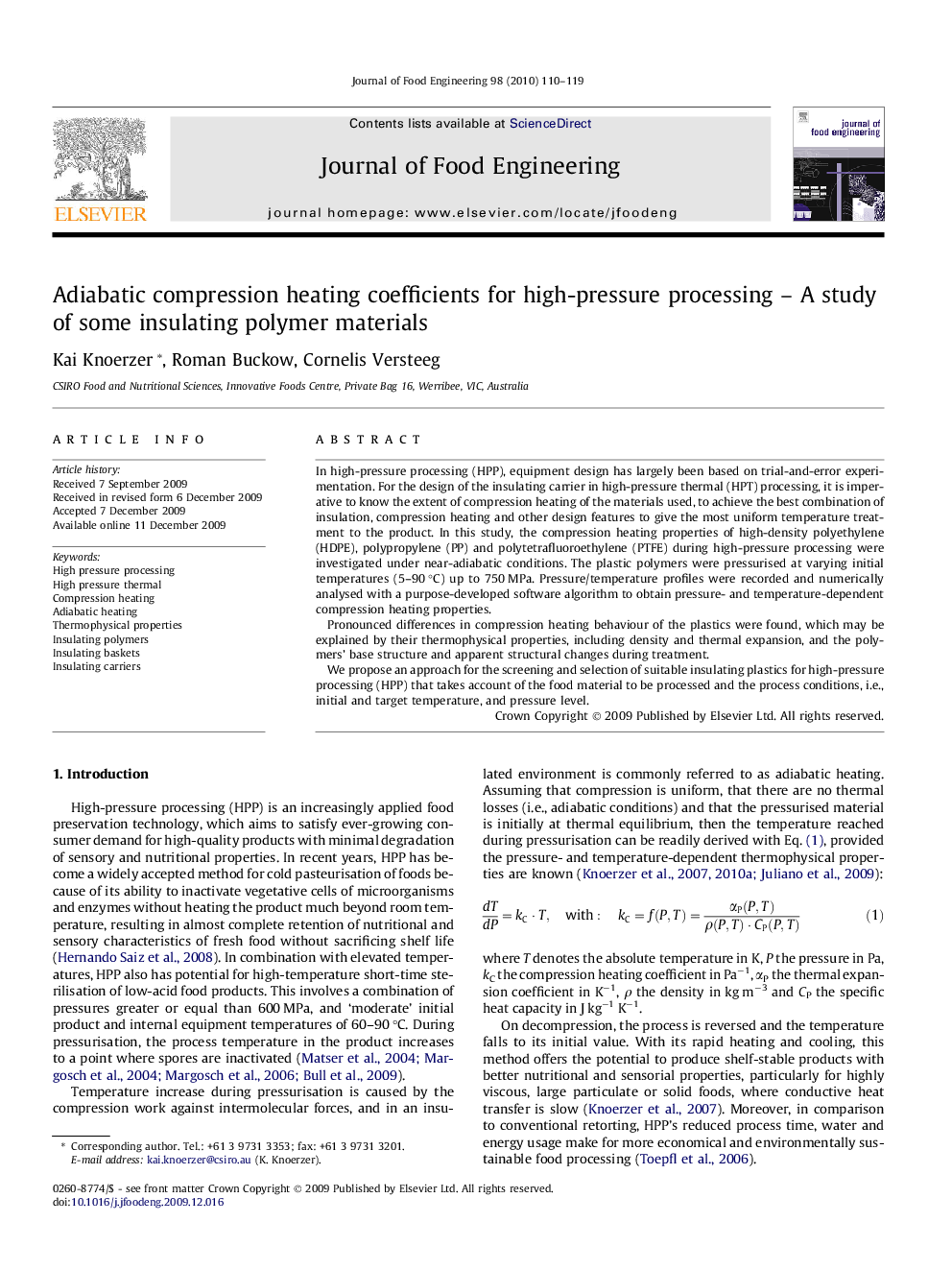| Article ID | Journal | Published Year | Pages | File Type |
|---|---|---|---|---|
| 224586 | Journal of Food Engineering | 2010 | 10 Pages |
In high-pressure processing (HPP), equipment design has largely been based on trial-and-error experimentation. For the design of the insulating carrier in high-pressure thermal (HPT) processing, it is imperative to know the extent of compression heating of the materials used, to achieve the best combination of insulation, compression heating and other design features to give the most uniform temperature treatment to the product. In this study, the compression heating properties of high-density polyethylene (HDPE), polypropylene (PP) and polytetrafluoroethylene (PTFE) during high-pressure processing were investigated under near-adiabatic conditions. The plastic polymers were pressurised at varying initial temperatures (5–90 °C) up to 750 MPa. Pressure/temperature profiles were recorded and numerically analysed with a purpose-developed software algorithm to obtain pressure- and temperature-dependent compression heating properties.Pronounced differences in compression heating behaviour of the plastics were found, which may be explained by their thermophysical properties, including density and thermal expansion, and the polymers’ base structure and apparent structural changes during treatment.We propose an approach for the screening and selection of suitable insulating plastics for high-pressure processing (HPP) that takes account of the food material to be processed and the process conditions, i.e., initial and target temperature, and pressure level.
